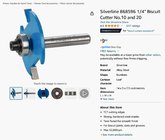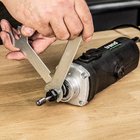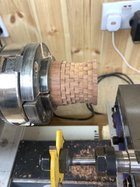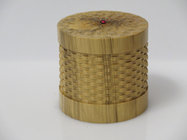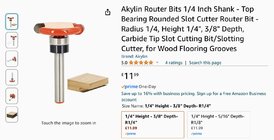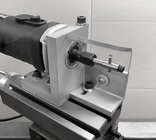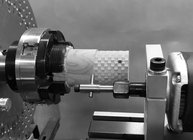If I read your advertisement correctly, the cutter is ~2” in diameter.
Comparing this to the use of a dado blade on a table saw, the dado blade would spin around 3,400 rpm. Maybe you can compare an 8” blade run at 3,400 rpm has the same surface feet/minute at the cutter as a 2” blade running around 13,600 rpm. But that is scary to me.
——————————————
Keyway cutters on milling machines are also similar. The recommended surface feet/minute for these on plastic is 200 (
https://internaltool.com/docs/reference/saf-keyway-cutters.pdf). That equates to a 2” cutter spinning at
200 ft/min * 12 in/ft / (2 * pi in/rev) = 389 rpm
Note: I welcome any input a machinist may have for this.
——————————————
The drilling charts say that a 2” Forstner bit should be revolved at 500 rpm. Other large cutters have similar speed recommendations when drilling.
——————————————
It seems to be well balanced, but it will still be cutting only a small part of the rotational circle; Maybe only 10° of the circle, leaving 350° spinning in the air.
——————————————
Regardless, I believe that running this cutter at 12,000 rpm will be too fast and probably unsafe.
If I were to use such a cutter in a
drilling spindle on my rose engine, I’d run the bit at a speed around 200-500 rpm.



